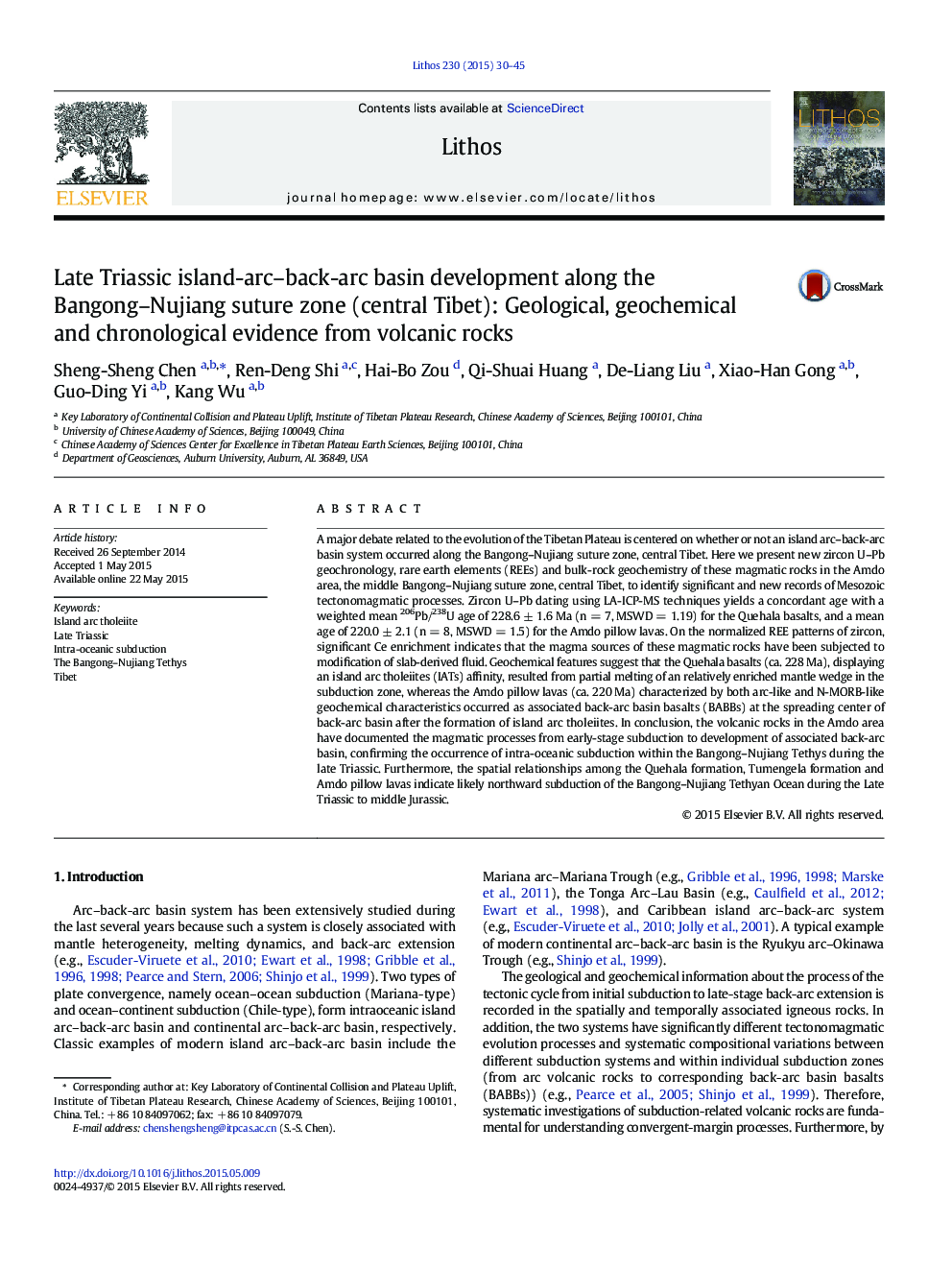| کد مقاله | کد نشریه | سال انتشار | مقاله انگلیسی | نسخه تمام متن |
|---|---|---|---|---|
| 4715669 | 1638661 | 2015 | 16 صفحه PDF | دانلود رایگان |

• Late Triassic magmatism occurred in the Amdo area, Tibet.
• Island-arc–back-arc basin system developed along the Bangong–Nujiang suture zone.
• Polarity of subduction of the Bangong–Nujiang Tethys was south to north.
A major debate related to the evolution of the Tibetan Plateau is centered on whether or not an island arc–back-arc basin system occurred along the Bangong–Nujiang suture zone, central Tibet. Here we present new zircon U–Pb geochronology, rare earth elements (REEs) and bulk-rock geochemistry of these magmatic rocks in the Amdo area, the middle Bangong–Nujiang suture zone, central Tibet, to identify significant and new records of Mesozoic tectonomagmatic processes. Zircon U–Pb dating using LA-ICP-MS techniques yields a concordant age with a weighted mean 206Pb/238U age of 228.6 ± 1.6 Ma (n = 7, MSWD = 1.19) for the Quehala basalts, and a mean age of 220.0 ± 2.1 (n = 8, MSWD = 1.5) for the Amdo pillow lavas. On the normalized REE patterns of zircon, significant Ce enrichment indicates that the magma sources of these magmatic rocks have been subjected to modification of slab-derived fluid. Geochemical features suggest that the Quehala basalts (ca. 228 Ma), displaying an island arc tholeiites (IATs) affinity, resulted from partial melting of an relatively enriched mantle wedge in the subduction zone, whereas the Amdo pillow lavas (ca. 220 Ma) characterized by both arc-like and N-MORB-like geochemical characteristics occurred as associated back-arc basin basalts (BABBs) at the spreading center of back-arc basin after the formation of island arc tholeiites. In conclusion, the volcanic rocks in the Amdo area have documented the magmatic processes from early-stage subduction to development of associated back-arc basin, confirming the occurrence of intra-oceanic subduction within the Bangong–Nujiang Tethys during the late Triassic. Furthermore, the spatial relationships among the Quehala formation, Tumengela formation and Amdo pillow lavas indicate likely northward subduction of the Bangong–Nujiang Tethyan Ocean during the Late Triassic to middle Jurassic.
Journal: Lithos - Volume 230, 1 August 2015, Pages 30–45